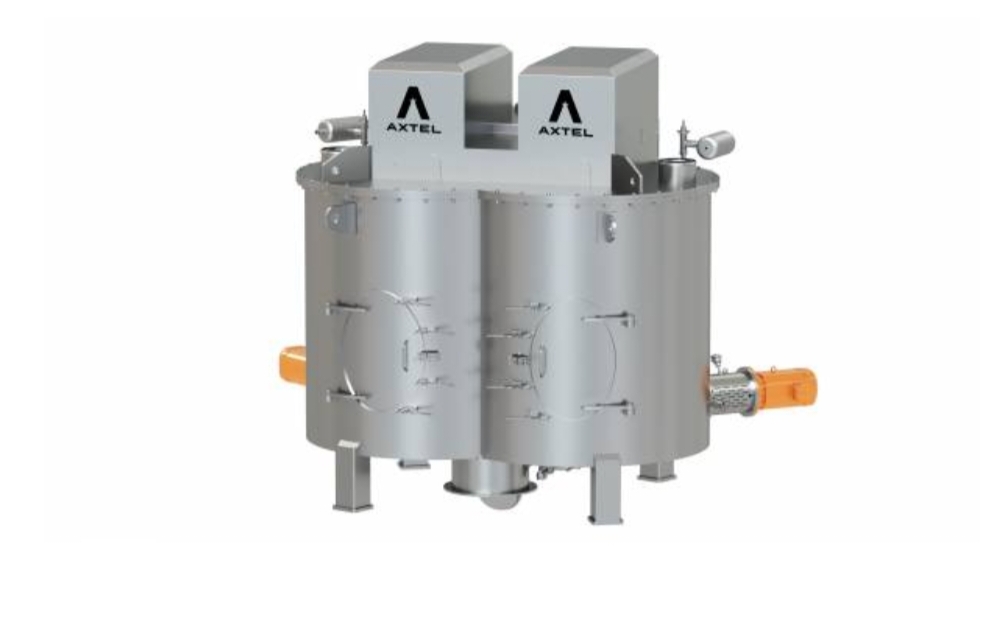Vertical mixers are essential equipment in food processing facilities, playing a crucial role in blending ingredients to achieve consistency in the final product. Ensuring that these mixers operate efficiently and effectively is vital for maintaining productivity and quality. By following a few practical tips, you can keep your vertical mixer running smoothly, reducing downtime and extending its lifespan. Let’s explore five tips that will help you achieve this.
1. Regular Cleaning And Maintenance
Maintaining cleanliness in your vertical mixers is of paramount importance. Over time, residues from ingredients can accumulate on the mixing blades and inside the mixer, leading to inefficient mixing and potential contamination of products. Cleaning the equipment after each use prevents build-up and ensures that the mixer remains in optimal condition. Moreover, it is essential to schedule routine maintenance checks to identify and resolve any wear and tear issues before they escalate.
Neglecting maintenance can cause the mixer to work harder than necessary, leading to increased energy consumption and potential breakdowns. By adhering to a regular cleaning schedule and conducting thorough maintenance, you can ensure that your vertical mixers continue to perform at their best. This practice not only enhances the quality of the output but also contributes to the longevity of the equipment.
2. Correct Loading Techniques
Using the correct loading techniques is essential for the smooth operation of vertical mixers. Overloading or underloading the mixer can lead to uneven mixing and strain on the machine. Always ensure that you load the mixer within the manufacturer’s recommended capacity. Overloading can cause the motor to overheat, while underloading may result in inefficient mixing, where ingredients fail to combine properly.
Additionally, it’s crucial to load ingredients in the correct order to ensure optimal mixing. Heavier ingredients should be added first, followed by lighter ones, allowing the mixer to work more efficiently. This method helps in achieving a homogenous mixture, which is critical in food processing. By following the correct loading techniques, you reduce the risk of mechanical failure and ensure that your vertical mixer operates efficiently.
3. Monitor And Adjust Speed Settings
Speed settings play a significant role in the performance of vertical mixers. Operating the mixer at the correct speed is crucial for achieving the desired consistency in your product. Running the mixer too fast can cause ingredients to spill, while a speed that is too slow may lead to under-mixing. It’s essential to monitor the speed settings and adjust them according to the type of ingredients being processed.
Different ingredients require different mixing speeds to achieve the best results. For example, dense or sticky ingredients may require a slower speed, while lighter ingredients might benefit from a faster setting. Understanding the appropriate speed for each application will help maintain the quality of the mix and prevent unnecessary strain on the mixer. Regularly reviewing and adjusting the speed settings as needed ensures that your vertical mixer continues to deliver consistent results.
For more tips on optimising the food processing equipment, you might find this guide on optimising cleaning & maintenance of food processing equipment insightful.
4. Keep An Eye On The Mixer Blades
The blades are the most critical component of vertical mixers, responsible for the actual mixing process. Over time, blades can become dull or damaged, affecting their efficiency and leading to inconsistent results. It’s important to inspect the mixer blades regularly for any signs of wear and tear.
If the blades appear dull or damaged, they should be sharpened or replaced immediately to avoid compromising the quality of the mix. Additionally, ensure that the blades are correctly aligned and securely fastened, as loose blades can cause mechanical issues and reduce the efficiency of the mixer. By taking care of the mixer blades, you can ensure that your vertical mixer continues to operate smoothly and produces high-quality output.
5. Invest In Operator Training
One of the most overlooked aspects of maintaining vertical mixers is the importance of operator training. Even the best equipment can fail if not used correctly. Proper training ensures that operators understand the equipment’s functionality, the correct procedures for loading, cleaning, and operating the mixer, and how to identify potential issues early on.
Investing in regular training sessions for your staff not only enhances their skills but also reduces the risk of equipment misuse, which can lead to breakdowns or accidents. An operator who understands how to use the vertical mixer correctly is more likely to notice when something isn’t functioning as it should, allowing for prompt corrective action.
Regular training sessions also provide an opportunity to update operators on any new features or technologies that may have been added to the mixer, ensuring that they are using the equipment to its full potential. For more information on improving staff efficiency, consider reading this post on enhancing staff efficiency in food processing.
Conclusion
Maintaining the smooth operation of vertical mixers is crucial for ensuring consistent product quality and maximising productivity in food processing. By implementing regular cleaning and maintenance routines, using correct loading techniques, adjusting speed settings appropriately, keeping an eye on mixer blades, and investing in operator training, you can significantly extend the lifespan of your vertical mixer and reduce the likelihood of costly breakdowns. Prioritising these practices will not only keep your mixer running smoothly but also contribute to the overall efficiency of your production process.
